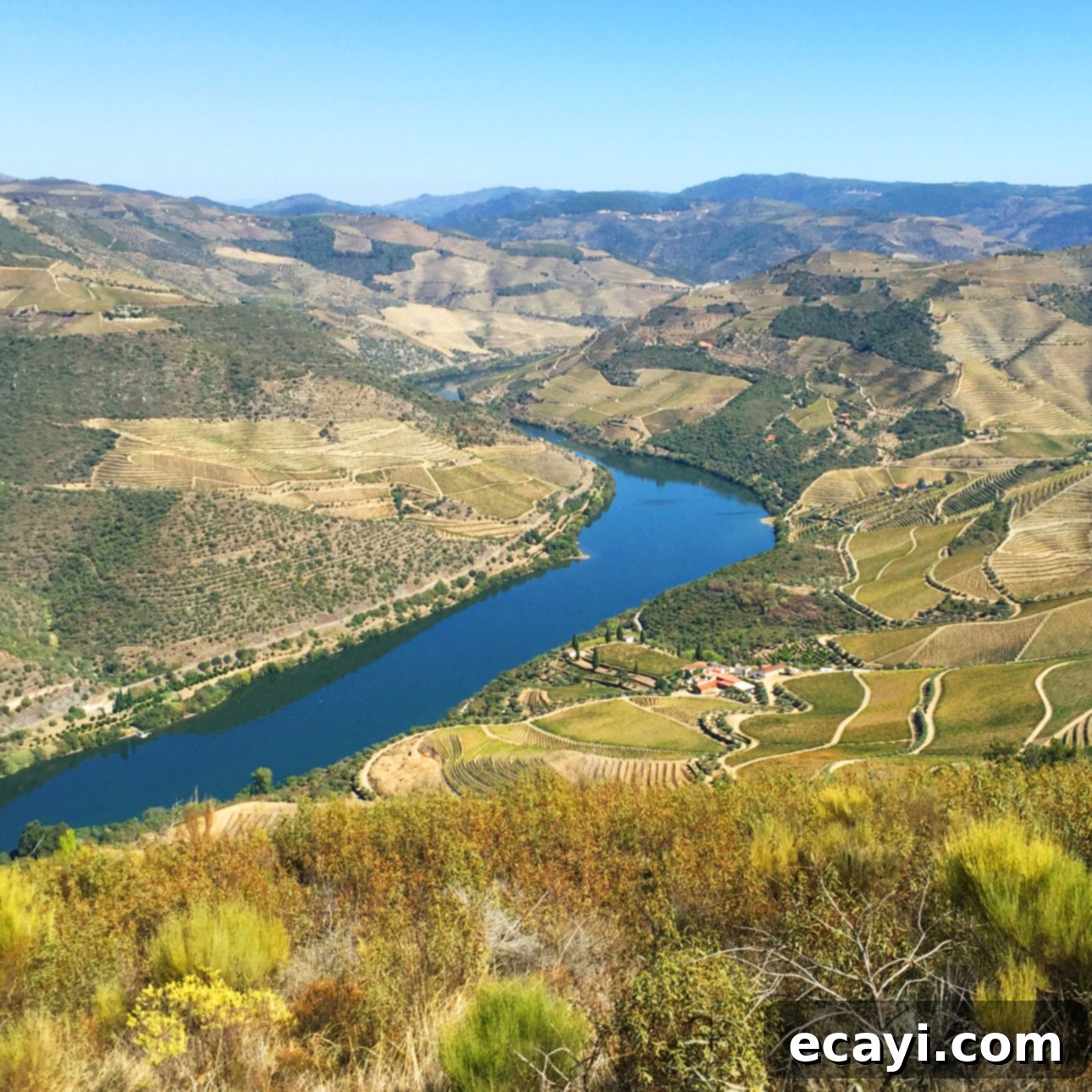Discover Northern Portugal: An Unforgettable Journey Through Porto and the Douro Valley
I recently returned from an incredible seven-day immersion in Northern Portugal, specifically exploring the vibrant city of Porto and the breathtaking Douro Valley. While it was only a week-long adventure, my mind is still buzzing with vivid images, tantalizing tastes, and cherished memories, making it feel like a much longer, profound journey. My previous brief visit to Porto in 2009 offered a glimpse into its charm, but this latest trip extended deep into the Douro region – the illustrious wine-producing valley that gracefully borders the Douro River, winding east of Porto.
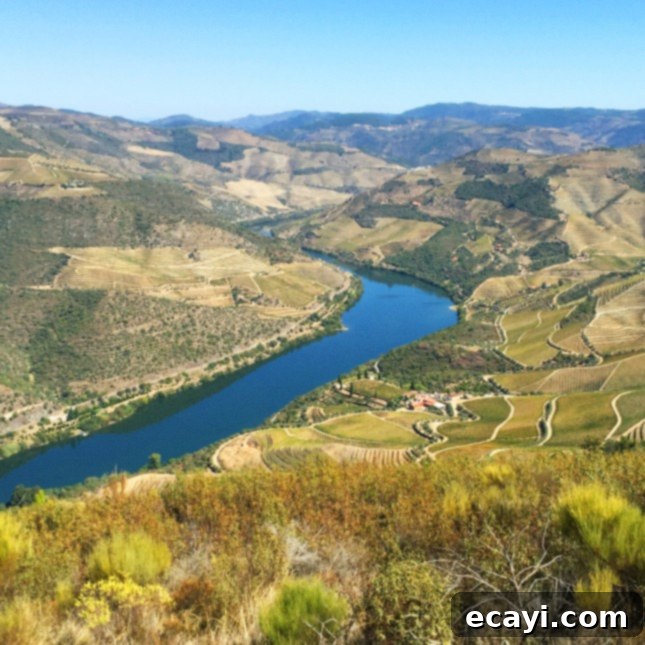
Before arriving, my knowledge of the Douro region and Portuguese wines was surprisingly limited. However, as those who have been following my journey on Instagram can attest, I’ve become utterly enchanted by this part of the world. Few destinations have captivated me so deeply and swiftly as Northern Portugal. What makes this region so uniquely special, you might ask? The true challenge isn’t finding reasons, but knowing where to begin to describe its allure.
For anyone seeking an authentic, rich, and unforgettable travel experience, Northern Portugal deserves a prominent spot on your radar. Here are three compelling reasons, evident yet profoundly impactful, that illuminate the magic of this extraordinary destination:
The Enchanting Landscape of the Douro Valley
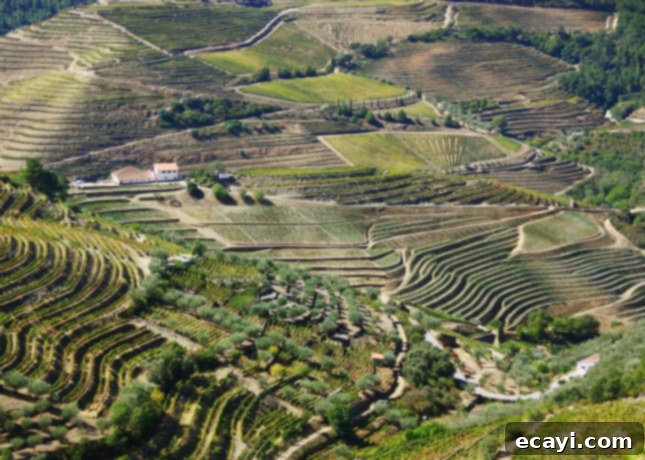
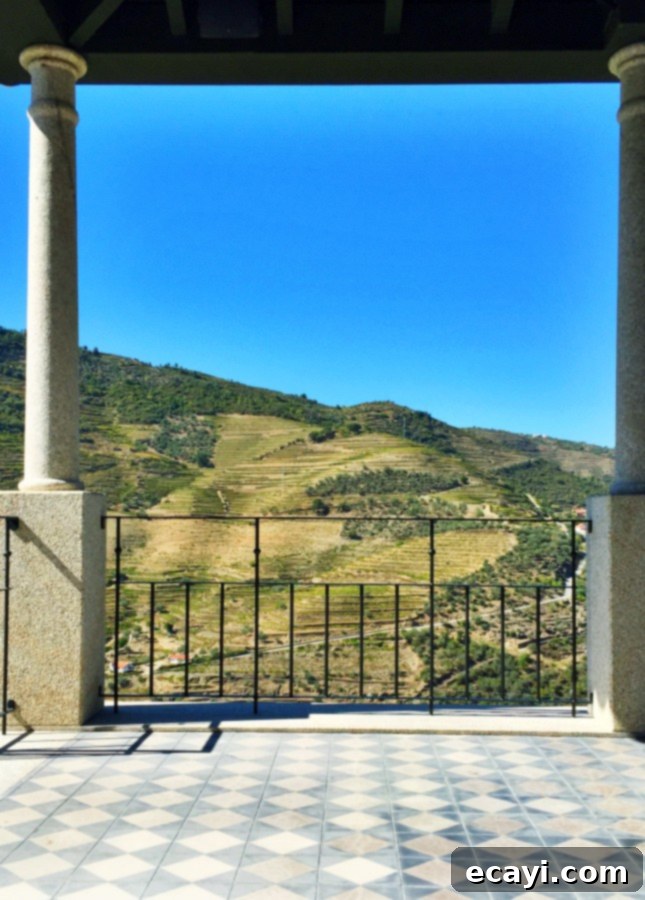
The breathtaking view from the terrace at Quinta do Pessegueiro.
When discussing the Douro, it’s simply impossible not to begin with its awe-inspiring scenery. The landscape is the first thing that steals your breath away and the most indelible image that lingers in your mind long after you’ve returned home. Imagine endless stretches of sun-kissed, rolling hills, carpeted in a tapestry of green and gold, extending as far as the eye can see. Thousands upon thousands of ancient, man-made wine terraces unfurl across these slopes like meticulously draped ribbons, a testament to centuries of human endeavor harmonized with nature.
Picturesque red-roofed houses cling precariously to seemingly unsuitable terrain, dotting the vibrant hillsides. As dusk settles, the sky ignites with spectacular sunsets, painting the valley in hues of fiery orange, soft pink, and deep purple. All the while, the serene, jade-colored Douro River undulates gracefully through the heart of it all, a lifeblood connecting the vineyards. Every aspect of the Douro Valley is worthy of superlatives; it’s hardly surprising that this entire, magnificent region is proudly designated as a UNESCO World Heritage Site, recognizing its outstanding cultural and natural significance.
The region’s roads are not merely routes but experiences in themselves, winding intricately through these magnificent hills. They subtly encourage, or perhaps necessitate, an adjustment to the local, unhurried rhythm of life. If you arrive carrying the residual stress of city life, I can confidently promise you’ll depart with a significantly healthier heart rate and a renewed sense of calm. Due to the unique and dramatic geography of the Douro, a destination that appears to be just a stone’s throw away on a map can often take an hour or more to reach. But what’s the rush in such a paradise? Embrace the journey, slow down, and truly savor every unfolding view, for this immersive experience is an integral part of what makes the Douro Valley so utterly magical and deeply rewarding.
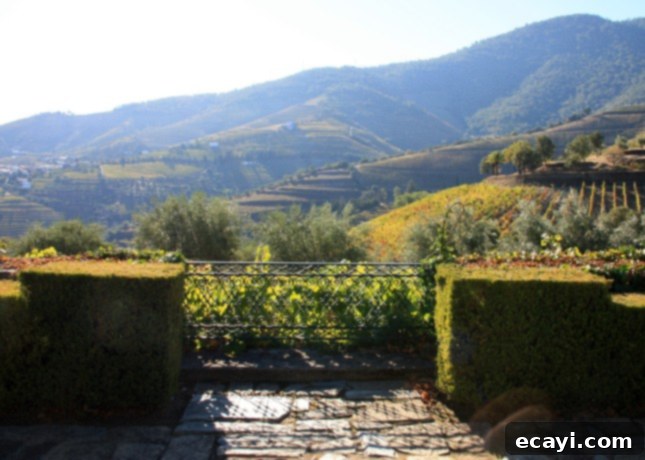
The captivating view from the terrace at Ramos Pinto’s Quinta do Bom Retiro.
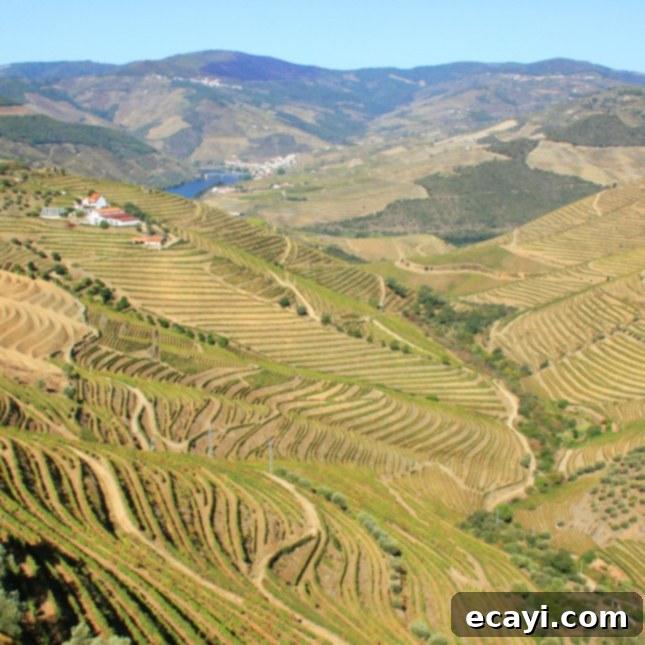
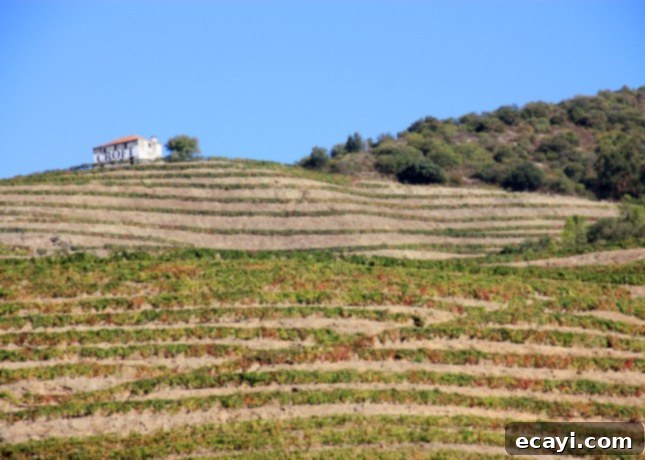
Exploring the Rich Wines of Northern Portugal
When the topic of Portuguese wines arises, most people immediately think of port wines, and this thought often leads directly to Porto. While these associations are not entirely incorrect, they don’t paint the complete picture of this diverse wine region. Firstly, the famous port houses aren’t strictly located within Porto itself; rather, they are primarily situated across the Douro River in Vila Nova de Gaia. Furthermore, these venerable port houses in Vila Nova de Gaia serve predominantly as storage and aging facilities, not as the primary wine-producing establishments. Finally, while port wines indeed represent a significant and cherished part of Northern Portugal’s viticulture, the Douro region is also renowned for crafting an exceptional array of superb still red and white wines, a fact often overshadowed by its fortified sibling.
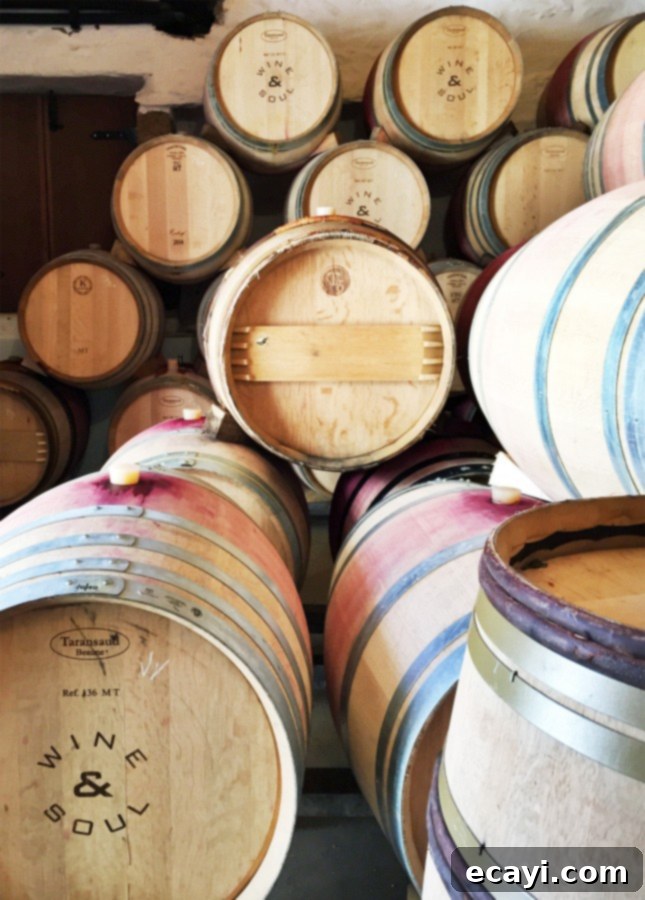
Considering the global renown of port wines, it can be truly surprising to discover just how much of the production process remains steadfastly artisanal. Many Douro wineries are deeply rooted family-run operations, where traditions are passed down through generations. Grapes are frequently harvested by hand, a necessity dictated by the region’s incredibly steep terrain and the narrow, challenging terraces where the vines thrive – conditions that simply do not permit the use of heavy machinery. For grapes destined for the finest vintage ports, the ancient method of crushing by foot in lagares (shallow stone tanks) is still practiced, a time-honored technique that ensures gentle extraction of color and tannin. This painstaking, labor-intensive process, steeped in history and tradition, is precisely the meticulous care that elevates port wine to the exceptional and revered product it is today.
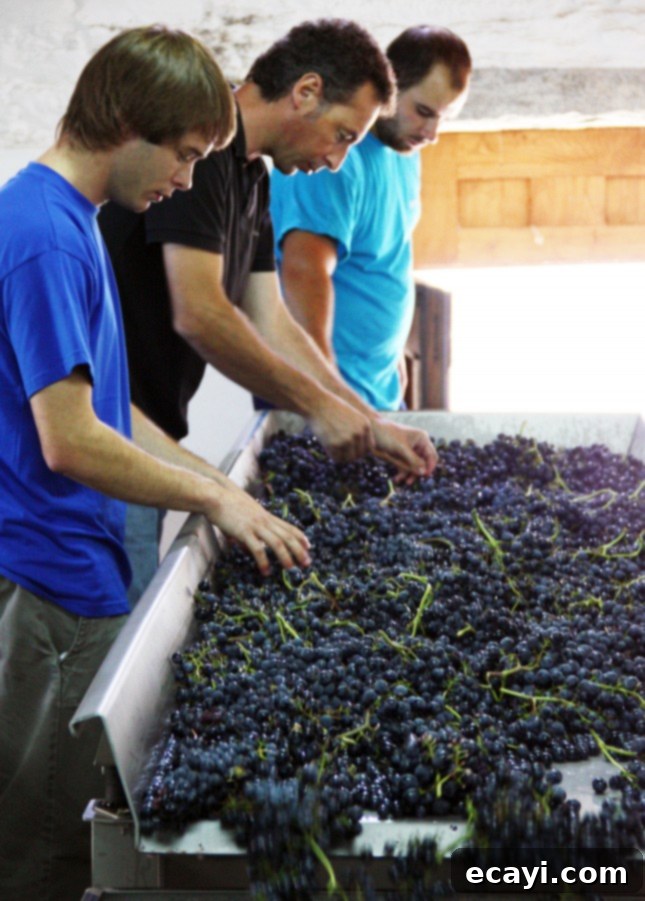
Meticulous hand-picking of grapes for quality at Wine & Soul.
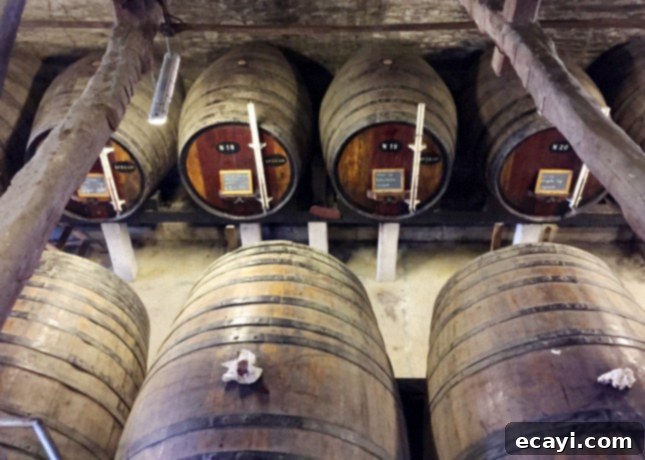
Rows of barrels of aging wine at Quinta do Noval.
However, the Douro Valley extends an equally warm welcome to those who may not particularly favor fortified wines. During my visit, I was privileged to taste an astounding range of still wines, exhibiting surprising width and depth – from exquisitely crisp and sophisticated whites that danced on the palate, to bold, robust, and tannic reds that spoke of the sun-drenched terroir. This remarkable diversity becomes perfectly clear when you witness the Douro landscape firsthand: how the intense Mediterranean sun bathes each peak and crease differently, influencing the microclimates of the vineyards. It’s also a testament to how generations of skilled winemakers have ingeniously sculpted the land, always respecting its singular character, to cultivate a variety of grape varietals. I had not anticipated such an expansive and impressive spectrum of flavors, but my taste buds were undoubtedly spoiled by the experience, revealing a world beyond just port.
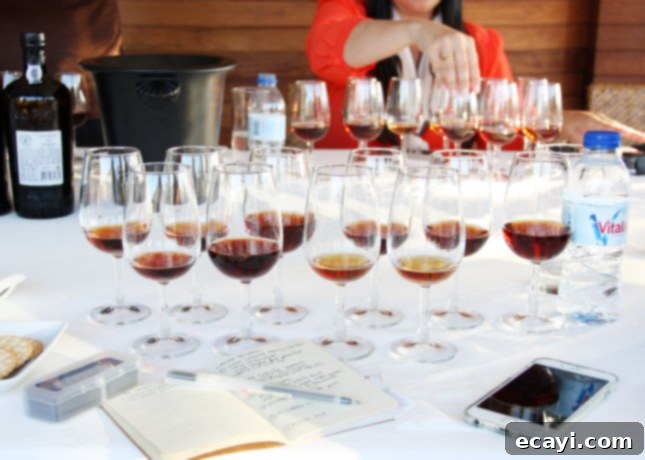
A comprehensive tasting lineup of distinguished port wines aged from 1941 to 2000, at Cálem, Porto.
Useful Links to Learn More About Douro Wines:
- History of Port, tracing its evolution from birth to the present day (Taylor Fladgate)
- An Essential Introduction to Port Wines (IVDP)
- Delving into the History of Wine Making in the Douro Valley (Douro Valley Tourism Website)
- A Beginner’s Comprehensive Guide to Portuguese Wine (Serious Eats)
- Portuguese Crush: The Country’s Wines Are Food-Friendly, Affordable, and Fantastic (Saveur Magazine)
A Culinary Journey: The Food of Northern Portugal
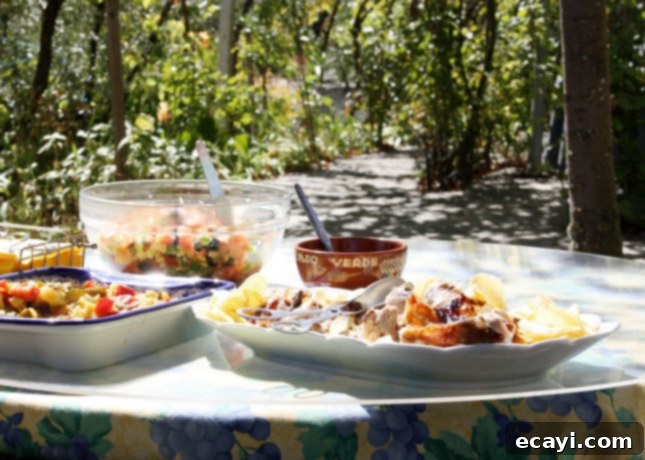
A delightful lunch experience at Quinta do Carrenho.
While tasting an impressive array of wines – and perhaps indulging in more than I’d readily admit – was a central theme of my week in the Douro, it was by no means the sole focus. The culinary experience was equally paramount, featuring an abundance of utterly delicious food. Portuguese cuisine is proudly rich, hearty, and bursting with authentic flavors. Staples like rustic breads, artisanal cheeses, savory sausages, exquisite cured meats, comforting soups, robust stews, the freshest fish and seafood straight from the Atlantic, and indulgent, rich desserts all contribute to truly memorable meals. Within the Douro Valley itself, olive, almond, and various fruit trees flourish alongside the sprawling wine terraces. Consequently, these locally grown ingredients are, unsurprisingly, heavily featured and celebrated in the regional dishes, adding a fresh, authentic dimension to every bite.
To give you a glimpse into the culinary delights, a typical lunch experience during my week in the Douro unfolded something like this, a feast for both the eyes and the palate:
A Typical Douro Valley Lunch Experience:
- An inviting assortment of regional snacks: This typically included delectable cured meats (like presunto and chouriço), perfectly grilled sausages, a selection of local nuts, succulent olives, and light, savory fritters.
- The finest local olive oil, often produced on the very quinta we were visiting, served generously with crusty, freshly baked bread for dipping.
- A comforting appetizer: This often took the form of a warming, flavorful soup or a vibrant, vegetable-based dish, prepared with seasonal produce.
- The substantial main course: Choices varied from a rich, slow-cooked stew, a hearty baked casserole (bacalhau, salt cod, being a favorite), or perfectly roasted meat, invariably accompanied by fluffy potatoes, aromatic rice, and crisp, refreshing salads.
- A selection of local cheeses, showcasing the region’s dairy traditions, often served with more of that irresistible bread.
- A delightful dessert: This could be a slice of moist cake, creamy custard, a comforting pudding, or a delicate flan, frequently paired with fresh, seasonal fruits.
- To conclude, coffee or tea, sometimes offered with a final flourish of small, sweet pastries or biscuits.
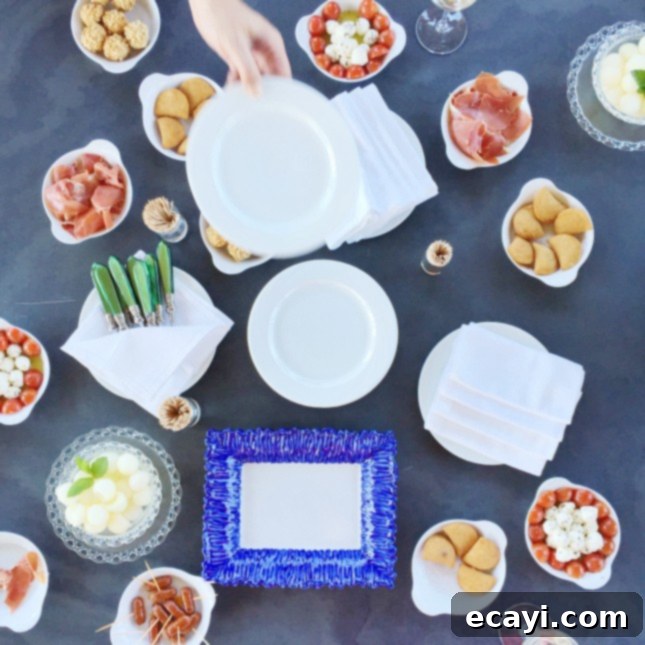
Delicious pre-lunch snacks setting the scene at Quinta do Pessegueiro.
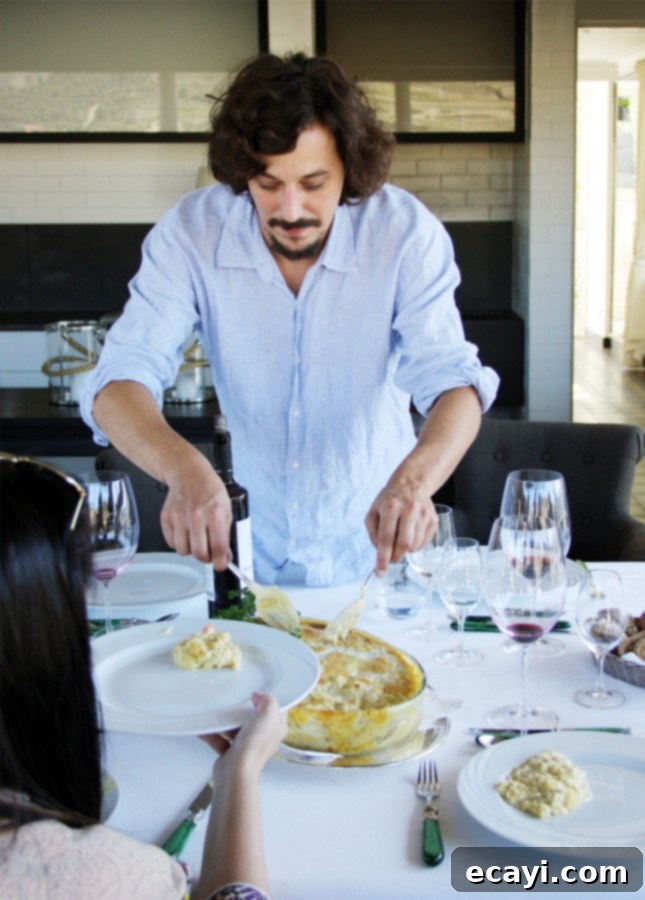
Quinta do Pessegueiro’s esteemed winemaker, João Nicolau de Almeida, personally serving a hearty bacalhau casserole for lunch.
It will likely come as no surprise, then, when I tell you that our average lunches often extended over three leisurely hours, sometimes stretching even longer. We would often rise from the table around 4:30 p.m., only to embark on a short drive to another quinta for a delightful happy hour featuring more exquisite bites and, naturally, more exceptional wines. This, in turn, would soon be followed by yet another magnificent multi-course dinner, accompanied by an ongoing stream of wonderful wines! Of course, my particular trip was intensely focused on food and wine, so you needn’t feel compelled to indulge to such an extent – even I must concede that maintaining such a pace for an entire week requires considerable stamina! However, you can rest assured that delicious, high-quality food is effortlessly accessible throughout Northern Portugal. The region thrives on a healthy, flavorful Mediterranean-style diet, yet it boasts distinct flavors and unique dishes that are entirely its own, offering a truly authentic taste of Portugal.
Oh, you know, just some chouriço grilling in the sun ☀️???????? #douro15 #lunchtweet #portugal
A video posted by Marie Asselin (@foodnouveau) on
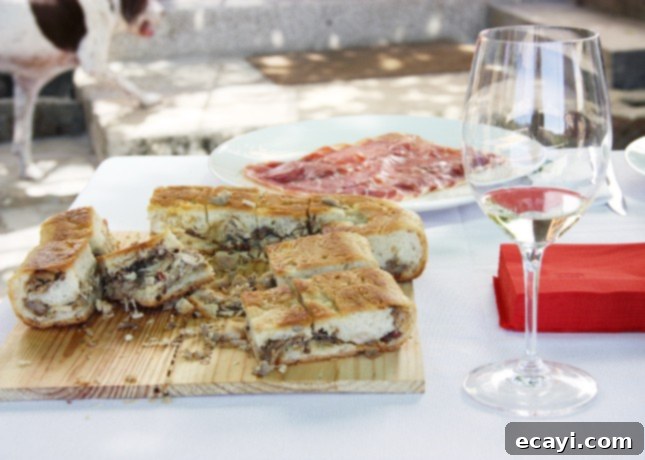
Delicious stuffed bread and cured meats served as tantalizing pre-lunch snacks at Wine & Soul’s Quinta do Manoella.
I plan to delve deeper into specific must-try dishes and culinary traditions of Northern Portugal in future posts. In the meantime, these articles are sure to ignite your appetite and inspire your next meal:
Further Reading on Portuguese Cuisine:
- Exploring Portugal, from Pork to Port (Epicurious.com)
- A Quick Guide to Portuguese Cuisine (The Guardian)
Even now, weeks later, I’m still processing the sheer volume of new discoveries and experiences from this trip. I’ll certainly need more time to fully assimilate and distill everything I wish to share and reflect upon. One thing is for sure: I absolutely cannot wait to start recreating some of these magnificent Portuguese dishes in my own kitchen! So, stay tuned… there is much more to come from my unforgettable journey through Northern Portugal.
—
My heartfelt thanks go to the Port and Douro Wines Institute (IVDP) and to Catavino, and specifically to Paulo Russell-Pinto and Ryan Opaz, for their invaluable guidance and for curating such an enchanting, truly unforgettable trip.
